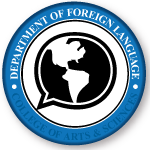Author ORCID Identifier
https://orcid.org/0000-0001-9008-1024
Document Type
Article
Publication Date
5-3-2024
Publication Title
Language in Society
First Page
1
Last Page
30
DOI
https://doi.org/10.1017/S0047404524000319
Abstract
Despite the significance of intersex constituencies for explaining the social nature of sex and gender, intersex linguistic and social practices remain a yet unexplored frontier within sociolinguistics. This article examines fundamental frequency (F0) and vowel formant (F1–F3) production by participants with Turner Syndrome (TS), one of the most common intersex chromosomal conditions, in Rio de Janeiro, Brazil. This analysis demonstrates significant differences in fundamental frequency and F3 among different participant groups. I argue that height, growth hormone, and chromosomes are fundamental in constructing womanhood for TS women. Along with relevant ethnographic data, these results call for a re-examination of the body within linguistic and anthropological understandings of ‘womanhood’ and ‘femaleness’. This article highlights the ways these biological factors intersect with gendered perceptions of age and maturity, which can have real-world effects on linguistic practice and the social life of intersex individuals. (Brazilian Portuguese, fundamental frequency, gender, intersex, Turner Syndrome, vowel formants, critical intersex studies)*
Recommended Citation
Dauphinais Civitello, Ashlee, "The liminal (vowel) space of womanhood: Fundamental frequency, formants, and the intersex body in Brazil" (2024). Foreign Languages and Literature Faculty Publications. 29.
https://digitalcommons.unomaha.edu/foreignlangfacpub/29
Creative Commons License

This work is licensed under a Creative Commons Attribution 4.0 License.


Comments
This article was published open access under the Open Access Publishing Agreement between the University of Nebraska and Cambridge University Press.
This is an Open Access article, distributed under the terms of the Creative Commons Attribution licence (http://creativecommons.org/licenses/by/4.0), which permits unrestricted re-use, distribution and reproduction, provided the original article is properly cited.